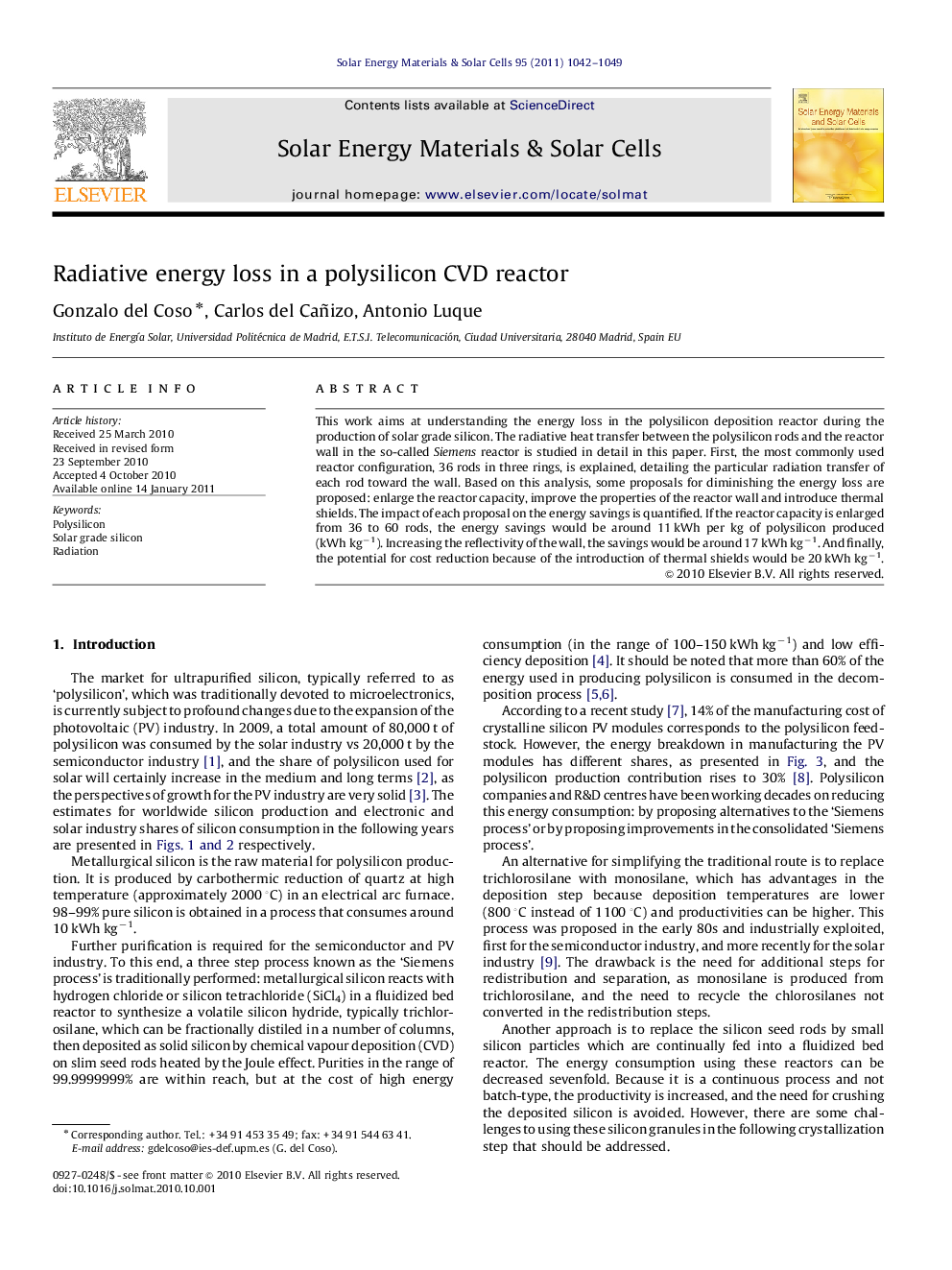| Article ID | Journal | Published Year | Pages | File Type |
|---|---|---|---|---|
| 79717 | Solar Energy Materials and Solar Cells | 2011 | 8 Pages |
This work aims at understanding the energy loss in the polysilicon deposition reactor during the production of solar grade silicon. The radiative heat transfer between the polysilicon rods and the reactor wall in the so-called Siemens reactor is studied in detail in this paper. First, the most commonly used reactor configuration, 36 rods in three rings, is explained, detailing the particular radiation transfer of each rod toward the wall. Based on this analysis, some proposals for diminishing the energy loss are proposed: enlarge the reactor capacity, improve the properties of the reactor wall and introduce thermal shields. The impact of each proposal on the energy savings is quantified. If the reactor capacity is enlarged from 36 to 60 rods, the energy savings would be around 11 kWh per kg of polysilicon produced (kWh kg−1). Increasing the reflectivity of the wall, the savings would be around 17 kWh kg−1. And finally, the potential for cost reduction because of the introduction of thermal shields would be 20 kWh kg−1.
Graphical AbstractFigure optionsDownload full-size imageDownload as PowerPoint slide
